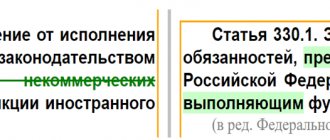An organized criminal community is the same organized group, but with a more complex structure. That is, the term “organized criminal community” completely absorbs the characteristics of an organized group. The legislator distinguishes the organized criminal community from organized groups using the characteristics of “stability” and “structure.” However, the law does not disclose their substantive meaning. It was also mentioned in the legal literature that the law does not differentiate the characteristics of a criminal community and a criminal organization.
GROWTH IN THE NUMBER OF CONVICTED FOR GROUP CRIMES
According to statistics from the Armed Forces of the Russian Federation, in 2014, criminal cases under Art. 208–210 of the Criminal Code, 116 were considered (or 3.9% of the total number of cases). The Rossiyskaya Gazeta, with reference to the Judicial Department of the Supreme Court of the Russian Federation, published information that over the past seven years the number of people convicted under Art. 210 Criminal Code increased by 2.5 times.
The results, of course, make you wonder: is everything here legally flawless? The press constantly publishes notes about the unreasonable interpretation of criminal norms and the tightening of punishment for less serious crimes through the use of the construct “organized criminal community.” The motives for imputing the guilt of the accused to members of an organized criminal community are quite simply explained: the opportunity to increase the period of preliminary investigation, an additional argument in favor of choosing a preventive measure, public outcry, statistical indicators of crime detection.
However, it should be especially emphasized that the legal uncertainty of the signs of “sustainability” and “structure” requires specification. After all, uncertainty entails different approaches to interpretation, which is unacceptable.
It is not possible to distinguish between the forms of complicity “organized criminal community” and “organized group” with a strict interpretation of the articles of the Criminal Code, since it is necessary to determine the substantive meaning of the signs “stability” and “structuredness”, but they are not defined in the criminal law.
In the legal literature, the question of distinguishing these criminal legal structures has long been asked. However, to date there is no common understanding and clear methodology that could be adopted into the Resolution of the Plenum of the Armed Forces of the Russian Federation dated June 10, 2010 No. 12 “On the judicial practice of considering criminal cases involving the organization of a criminal community (criminal organization) or participation in it (it)” (hereinafter referred to as Plenum Resolution No. 12).
From practice.
Confirmation of what has been said is the position of the Supreme Court of the Russian Federation in one of the criminal cases. The panel of judges gave the following explanation: “Thus, a criminal community (criminal organization) presupposes the presence of mandatory characteristics - cohesion and organization.
Within the meaning of the law, cohesion is understood as the presence of common goals among members of an organization, intentions that transform the criminal community into a single whole, the presence of established connections, organizational and management structures, a financial base, a single cash register from contributions from criminal activities, conspiracy, a hierarchy of subordination, uniform and strict rules of relationships and behavior with sanctions for violation of the unwritten charter of the community" (appeal ruling of the Supreme Court of the Russian Federation on September 14, 2015 in case No. 67-APU15-30).
The question arises: how to understand the judges’ reference to the sign of cohesion if the legislator excluded from Art. 35 of the Criminal Code, is this a differentiating feature for an organized criminal community when distinguishing from an organized group? It turns out that even at the level of the Supreme Court of the Russian Federation, judges have little understanding of what constitutes an organized criminal community.
We will analyze each of the criminal legal structures in detail.
ORGANIZED GROUP
An organized group as a form of complicity was first mentioned in the decree of the All-Russian Central Executive Committee of June 20, 1919 “On their removal from general jurisdiction in areas declared under martial law.” Thus, the concept of “gang” was legislated, which consisted in the permanent nature of the community and in the conversion of criminal activity into a craft by members of the gang. The “gang” (organized group) did not stand out from the criminal community and was interpreted as a variety of the latter.
Subsequently, an organized group as a form of participation was enshrined in Art. 17.1 of the Criminal Code of the RSFSR: “A crime is recognized as committed by an organized group if it is committed by a stable group of persons who have united in advance to commit one or more crimes.”
The current criminal law has fully adopted the concept of an organized group laid down in the Criminal Code of the RSFSR. In paragraph 3 of Art. 35 of the Criminal Code contains the following definition of an organized group: “A crime is recognized as committed by an organized group if it is committed by a stable group of persons who have united in advance to commit one or more crimes.”
R. R. Galiakbarov understands an organized group as “an association of two or more persons who have previously organized themselves to commit one or more crimes.”
V. Zenin and L. Kruglikov believe that an organized group is distinguished by a high degree of organization, stability of the composition (the presence of a permanent “core”), cohesion of group members, careful distribution of roles, sometimes with a kind of “specialization” of the criminals included in its composition.
N. Tkacheva and M. Minenok propose to understand an organized group as a stable, cohesive association of individuals with specific criminal skills, connections, and experience, organized for the systematic commission of identical or homogeneous crimes.
The official interpretation of an organized group is contained in paragraph 15 of the resolution of the Plenum of the Supreme Court of the Russian Federation dated December 27, 2002 No. 29 “On judicial practice in cases of theft, robbery and robbery”: a stable group of persons that includes an organizer (leader) who has distributed functions among members of the group in preparation for committing a crime and carrying out criminal intent, as well as a pre-developed plan for joint criminal activity.
However, the following questions remain unclear: what degree of organization forms a stable group? Does the organizer (leader) himself perform the functions of an executor of criminal activity in the group, or does he only carry out criminal activity in the form of making management decisions?
Organized group and criminal community (criminal organization) as forms of complicity
Category: Criminal law.
In the theory of criminal law, a distinction is made between the so-called “simple” and “complex” complicity. “Simple” complicity includes co-execution (both with and without prior conspiracy); “complex” includes complicity with a division of roles, in which, along with the perpetrator, the organizer, instigator or accomplice, i.e., an organized group, participate in the commission of the crime. .
In accordance with Part 3 of Art. 35 of the Criminal Code, a crime is recognized as committed by an organized group if it is committed by a stable group of persons who have united in advance to commit one or more crimes. Consequently, the mandatory features of such a group are: preliminary conspiracy and stability. And if preliminary collusion from the substantive side, in general, both in theory and in practice, does not cause any serious disagreement, then sustainability is understood differently in theory and in practice.
Firstly, there is no legislative definition of the concept of “sustainability”. When deciding specific criminal cases, courts are forced to rely on the interpretation of this concept, which is contained in the decisions of the Plenums of the Supreme Courts of the RSFSR and the Russian Federation on specific criminal cases.
Thus, in paragraph 9 of the resolution of the Plenum of the Supreme Court of the RSFSR and the Russian Federation No. 3 of May 4, 1990 “On judicial practice in cases of extortion,” it is recommended that an organized group be understood as “a stable group of two or more persons united with the intent to commit one or more crimes. Such a group is characterized, as a rule, by a high level of organization, planning and careful preparation of the crime, distribution of roles between accomplices, etc.”
In paragraph 3 of the resolution of the Plenum of the Supreme Court of the Russian Federation dated December 21, 1993, “On judicial practice in cases of banditry,” it was noted that the stability of a gang can “be evidenced by such signs as the stability of its composition and organized structures, the cohesion of its members, the constancy forms and methods of criminal activity.”
The resolution of the Plenum of the Supreme Court of the Russian Federation dated January 17, 1997 states that “the stability of a gang can be evidenced, in particular, by such signs as the stability of the composition, the close relationship of members, the consistency of their actions, the constancy of the forms and methods of criminal activity, the duration of the existence of the gang and the number of crimes she committed.”
A simple analysis of the above “recommendations” shows that the Supreme Court does not follow the path of meaningful disclosure of the concept of “sustainability”, but along the path of increasing the signs that supposedly reveal this concept or indicate its existence. Moreover, the signs indicating “sustainability” also include assessment categories that have nothing to do with sustainability (for example, “cohesion”, “constancy of forms and methods of criminal activity”, etc.).
The second lexical meaning of the word “stable” is indicated in the Russian language dictionary – “not subject to fluctuations, constant, persistent, firm.” As a characteristic of the collaboration of people, the term “sustainable” is used to a greater extent in social psychology and is also considered as an indicator of the duration of the existence of a particular group.
At the same time, in socio-psychological science there is no doubt about the position in which sustainability is understood as an external expression of the life of a group.
In this regard, most researchers believe that the objective content of the concept of “sustainability” consists of the following features:
- relatively stable composition of participants;
- a long or intense period of joint activity, characterizing the activity of the participants and the group as a whole;
- structural certainty of the group with the definition of the roles of its participants.
It seems that in relation to a criminal group we can talk about stability in the following cases:
- there is a relatively stable composition of participants;
- a long or intense period of criminal activity characterizes the activity of both each individual member of the group and the activity of the group as a whole;
- in reality there is a structural (organizational) definition of the group, with the definition of the roles of its participants.
In complicity with the distribution of roles, the perpetrators have different functions in a joint act: one of them directly carries out the crime (the perpetrator), the others assist it. The nature of assistance may be different, and therefore the organizer, instigator and accomplice are distinguished. The roles of the perpetrators in this form of complicity are combined differently. A performer and one assisting person are required.
A joint group crime involves the performance by accomplices of such actions that contain signs of the objective and subjective aspects of the crime. In paragraph 12 of the resolution “On judicial practice in cases of theft of state or public property” of 1972, the Plenum of the Supreme Court of the USSR indicated that “theft committed by prior conspiracy by a group of persons should be understood as theft in which two or more persons participated, having agreed in advance to commit it together,” and not to provide, for example, assistance to the perpetrator by providing the instruments of the crime, etc.
Complex complicity (complicity with distribution of roles) does not form a qualifying feature for a group of persons: each of the accomplices will be held liable in accordance with the role they played in the commission of the crime - perpetrator, instigator, accomplice (the last two with reference to Article 33 of the Criminal Code). There may be cases of joint commission of a crime, when two or more perpetrators participated in it, as well as persons with other functions (instigator, accomplice, organizer). In this case, if, of course, the corpus delicti of the crime being carried out has the qualifying attribute “committing a crime by prior conspiracy by a group of persons,” the co-perpetrators bear criminal liability with the imputation of this attribute, and the actions of other accomplices are also qualified on this basis with reference to Article 33 of the Criminal Code.
When a crime is committed by an organized group, the presence of a group of persons is possible when committing any intentional crimes. A group of persons can be identified as a qualifying feature of certain crimes. In the Special Part of the Criminal Code, as a qualifying feature, the commission of a crime by a group of persons is much less common compared to an organized group, mainly in crimes against the person (clause "g" part 2 of article 105, clause "a" part 3 Article 111, paragraph "g" part 2 Article 112, paragraph "e" Part 2 Article 117, paragraph "b" Part 2 Article 131, paragraph "b" Part 2 Art. 132, paragraph “a”, part 2, article 213 of the Criminal Code).
Based on the nature of participation and the functions performed by persons, a distinction is made between co-execution and complicity with distribution of roles. It is necessary to understand which of these two forms is associated with the concept of an organized group of persons?
It is quite obvious that an organized group poses a greater danger than a group that has even previously agreed to commit a crime. In theory and practice, the concept of “organized group” is not sufficiently defined; various authors offer many definitions. As a result, this concept either unreasonably expands, coming closer to the concept of “group commission of a crime” (which raises doubts about the need for specialization of this concept), or it narrows excessively, limiting itself only to forms of crime similar to the Italian or American mafia.
A generalization of the practice of applying the law shows that when using the sign of a crime committed by an organized group, errors occur. One of them boils down to the fact that the characteristics of an organized group are replaced by indicators of a social rather than a legal nature. The most typical variant of such incorrect application of the law is the confusion of family ties with the characteristics of an organized group.
Perhaps we should agree with the opinion of many scientists that courts sometimes do not examine not only the fact of the presence or absence of a preliminary conspiracy between the participants in the crime, but also the circumstance of how the roles were distributed between them, as well as other circumstances that allow us to conclude about the presence or absence organized group.
Even more unsuccessful is the attempt to interpret the criminal law concept of an organized group through signs of a criminological nature. Among them, it is proposed, for example, to highlight the following: the development of norms of behavior and value orientation in the group, a clearly defined hierarchical structure, the presence of a leader, the presence of a functional structure in the group, role differentiation of members of a criminal group, the nature of relations in the group, the order of distribution of group income, the existence in the special money fund group.
An organized group involves closer interaction between the perpetrators than when a crime is committed by a group of persons by prior conspiracy. In accordance with Part 3 of Article 35 of the Criminal Code, a crime is recognized as committed by an organized group if it is committed by a stable group of persons who have united in advance to commit one or more crimes.
The stability of an organized group is understood as the presence of permanent connections between members and specific methods of activity for the preparation or commission of one or more crimes. The stability of an organized group presupposes preliminary agreement and co-organization. This type, in contrast to complicity with prior conspiracy, is characterized by a greater degree of stability and consistency between the participants. Members of an organized group may be individuals who participated in the development of a plan to commit a crime or individuals who knew about the plan and actively carried it out. The activities of an organized group are often associated with the distribution of roles, but this does not at all exclude co-execution.
In this regard, in the specialized literature, the issue of qualifying the commission of a crime as part of an organized criminal group is controversial, depending on the functions of their participants. Under articles that provide for the actions of an organized group, most experts propose any criminal actions of its members committed in the process of implementing the group’s plans. Others believe it is possible to apply these rules of law only to cases of organized co-execution of a crime.
The imperfection of criminal legal regulation of complex forms of complicity in a crime predetermines objective difficulties in law enforcement practice. Legislative definitions of “committing a crime by a group by prior conspiracy” and “organized group” in Parts 2 and 3 of Art. 35 of the Criminal Code (and earlier - in a similar wording of Article 17-1 of the Criminal Code of the RSFSR, put into effect by the Federal Law of July 1, 1994) did not bring the necessary clarity to the delimitation of the concepts under consideration and did not facilitate their application in investigative and judicial practice. This is evidenced by materials from criminal cases involving group crimes, supervisory and cassation practice, and other sources. For example, as O. V. Pristanskaya points out, a survey of 32 judges from different regions of the country demonstrated the lack of clear ideas among the judiciary about the criteria for defining different types of criminal groups. In their answers to the question about the main differences between an organized criminal group and a group committing crimes by prior conspiracy, the judges presented 24 different combinations of characteristics that they use when qualifying group crimes. Among the criteria for defining an organized criminal group, there were references to the “branchedness” and “hierarchy” of a criminal group, its “solidity” and “mass character”, in other words, about such characteristics that clearly go beyond the scope of its legislative structure.
A. Ya. Yarovov makes the following distinction between an organized group and a group of persons by prior conspiracy.
Firstly, a distinction can be made according to the degree of public danger: accordingly, a group of persons by prior conspiracy has a lower degree of public danger compared to an organized group, which is reflected in the larger amount of punishment often provided by the legislator for committing a crime by an organized group, which is, Moreover, it is a form of manifestation of organized crime.
Secondly, a group of persons by prior conspiracy differs from an organized group in the absence of a sign of stability.
Thirdly, a group of persons by prior conspiracy after committing one (or several, not systematic) crimes, as a rule, ceases to exist as a criminal entity; an organized group, on the contrary, is characterized by a long-term, stable nature of criminal connection and a focus on committing several (more than two) crimes over a long period of time.
Fourthly, in a group of persons in a preliminary conspiracy, the degree and detail of the agreement that arises as a result of the conspiracy remains quite low (the details of the crime are not specified, planning is present in a primitive form, etc.).
Fifthly, as a rule, when a crime is committed by a group of persons by prior conspiracy, the division of roles is either completely absent or is of a “technical” nature, which does not affect the qualifications of the crime. On the contrary, for an organized group, the distribution of roles, as indicated in judicial practice, is a characteristic feature.
P.F. Telnov, noting that the degree of responsibility of accomplices according to the law is determined taking into account not only the nature, but also the degree of their participation in the crime and it is not allowed to increase the responsibility of accomplices on formal grounds, according to the names of their role, indicates that “this rule is not is maintained if we consider that interaction by prior agreement of two co-perpetrators forms a criminal group and entails increased liability, and joint activity under the same conditions, for example, the organizer and the perpetrator does not create a criminal group.”
Thus, all persons included in it and performing any mutually agreed functions in the process of implementing the plan of the organized group should be considered participants in an organized criminal group. The authors of the Commentary to the Criminal Code of the Russian Federation also think, pointing out in it to paragraph “g” of Part 2 of Art. 105 that when a crime is committed by an organized group, “there may be an actual division of roles, but the members of the organized group, regardless of the role each of them plays in the murder process, are recognized as co-perpetrators. Therefore, the reference to Art. 33 of the Criminal Code is not needed.”
Thus, as a conclusion, it should be noted that an organized group is a type of “complex” complicity. Its originality lies in the presence of a sign of stability, meaning that the participants (members) of an organized group are united by the goal of jointly committing, as a rule, numerous and not necessarily identical crimes over a long period of time. Such a group must have a leader (organizer). Group members, as a rule, carefully plan and prepare the commission of crimes (or one of the most dangerous ones), distribute roles among themselves, are provided with technical support, and form a close association, indicating the professionalism of the accomplices.
A criminal community (criminal organization) as an independent form of complicity was first legislatively identified in the Criminal Code of the Russian Federation in 1996, when the legislator included Article 210 of the Criminal Code “Organization of a criminal community (criminal organization)” in the chapter “Crimes against public safety”.
The criminal community is the most dangerous of all types of complicity. The danger of this type is characterized by the severity of crimes committed by criminal communities. A criminal community is characterized by the highest degree of cohesion and agreement between participants, which distinguishes the community from other types of complicity. According to Part 4 of Art. 35 of the Criminal Code “A crime is recognized as committed by a criminal community (criminal organization) if it is committed by a structured organized group or a union of organized groups operating under a single leadership, whose members are united for the purpose of jointly committing one or more grave or especially grave crimes in order to obtain directly or indirectly financial or other material benefit."
Until November 2009, the defining feature of a criminal community was “cohesion,” the content of which caused much controversy among scientists and practitioners. At the moment, the legislator has replaced cohesion with a number of other features.
In our opinion, the approach to consolidating the concept of a criminal community by pointing to “cohesion” was not entirely successful.
Firstly, the sign of cohesion was not disclosed in the law, just like the sign of stability in the concept of “organized group”. In practice, these signs were difficult to distinguish. Moreover, in criminological terms, these signs complement each other, but are not opposed. It is difficult to imagine a stable organized criminal group that is not united, since the latter is a manifestation of stability. Indeed, cohesive can be interpreted as “friendly, unanimous, organized.”
Like “stability,” cohesion is a socio-psychological concept used to designate processes of group dynamics. Cohesion in legal psychology refers to the degree of connection between group members. It is obvious that cohesion is characteristic to one degree or another of any group, including any criminal group, where the degree of connection between the accomplices can be from minimal to very high.
In this regard, it is not clear why the legislator decided to abandon this term in the definition of a criminal community.
Analyzing the points of view of researchers, we can identify the following features that characterize a criminal community (criminal organization), in contrast to an organized group:
- firstly, a criminal community is a structured organized group or association of organized groups operating under a single leadership;
- secondly, the presence of a special purpose of creation: the commission of one or more grave or especially grave crimes to obtain directly or indirectly financial or other material benefits.
Other signs identified in the literature are more of a criminological nature, but can be used to establish the above-mentioned signs:
- the criminal community has a greater degree of social danger;
- the criminal community, as a rule, is characterized by the presence of interregional as well as international connections;
- the criminal community has a high level of moral and psychological unity;
- as a rule, corrupt government officials are involved in the activities of the criminal community;
A criminal community poses a significantly greater danger than an organized group. This is explained by the fact that the criminal community is characterized by the large number of its participants, the heterogeneity of the criminal acts committed, often interregional prevalence, often the merging of criminals with corrupt representatives of government and law enforcement agencies, the presence of an artificially created “roof” that protects the community from the justice system and competitors.
Obviously, a criminal community is a form of joint participation of two or more persons in criminal activity. The scientific literature suggests that the criminal community is a pyramid, at the base of which are ordinary perpetrators of specific crimes, and at the top are the elite (leaders), directing the activities of all criminals who make up the pyramid.
Considering the danger of the crimes for which a criminal community is formed, the legislator classifies the organization itself and participation in criminal communities as independent crimes.
It should be noted that the sign of direction to commit one or more serious or especially serious crimes in order to obtain directly or indirectly financial or other material benefits cannot be a serious difference from an organized group, since the latter can also be created to commit such crimes. But what to do in cases where a close-knit organized group commits crimes that are not classified by the Code of the Russian Federation as grave or especially grave? Is it possible to hold the criminal community accountable in such cases at all? Obviously you can't. But sometimes this is unjustified. For example, a significant part of economic crimes, especially in light of the constant “humanization” of legislation in this area, will not fall into the categories of grave and especially grave, which will negatively affect the fight against organized crime in this area.
It seems more successful the approach proposed by the authors of the draft Federal Law “Legal Regulation of the Fight against Organized Crime,” who separated the concepts of “criminal organization” and “criminal community.”
In the analyzed document, a criminal organization is understood as “an association of three or more individuals or two or more organized groups for joint criminal activity with the distribution among participants of functions for the creation of an organization, its management, other forms of ensuring the creation and functioning of a criminal organization, for the direct commission of criminal acts, provided for by the articles of the Special Part of the Criminal Code, as well as on the legalization and increase of criminal proceeds or other forms of ensuring the functioning of the organization.”
A criminal community is understood as “the complicity of organizers or leaders, or other representatives of criminal organizations, groups, or persons committing a crime in the development or implementation of measures to maintain, develop a crime or ensure impunity for those responsible for it, or in creating other favorable conditions for criminal activity.” .
It is obvious that both definitions, although they more accurately reflect the substantive side of the concepts under consideration, “do not fit” into the traditional framework of the criminal legal institution of complicity. But legislators did not dare to introduce a new institution into criminal law—the criminal law institution of a “criminal group.” Therefore, today we have the institution of complicity with those of its forms that were analyzed by us, and with those shortcomings that were mentioned above.
The criminological characteristics of criminal organizations allow us to conclude that this form of joint criminal activity is not covered by the concept of complicity, which is now enshrined in the law. According to the law (Article 32 of the Criminal Code), complicity is “the intentional joint participation of two or more persons in the commission of an intentional crime.” Thus, the starting point characterizing complicity under current legislation is jointness, which is understood as joint participation in the commission of the same crime. Jointness as a sign of complicity in material compositions is that: a) the actions of each accomplice are a necessary condition for the commission of actions by other accomplices; 6) the resulting result is common and uniform for all participants; c) the actions of each accomplice are in a causal connection with the overall criminal result. In formal compositions, jointness is expressed in the fact that: a) the actions of each accomplice are a necessary condition for the commission of actions by other accomplices; b) the crime committed is the same and common to all accomplices. And although jointness here is defined only on an objective plane (and this attribute is also subjective), this is enough to ensure that it is impossible to talk about jointness in crimes committed by a criminal community if one member of the community killed, another engaged in robbery, a third received or gave a bribe, the fourth - abused his official position. By the way, in Article 35 of the Criminal Code, which defines group forms of committing a crime, in Part 4 (criminal community), as well as in the third, there is no indication of the sign of jointness, in contrast to the first two and the general concept of complicity given in Article 32 of the Criminal Code.
This ambiguity regarding the criminal community will require official clarification. It is also doubtful that the legislator included the characteristics of a criminal community in the article on the commission of a crime by a group of persons. The concept of a group, as it is interpreted in psychology and applied in criminal law, is quite applicable to a group of persons, a group of persons by prior conspiracy, an organized group, but not to a criminal community whose members are engaged in various criminal activities. The same community may include property thieves, extortionists, swindlers, bribe givers and bribe takers, murderers, smugglers, etc. This may also include people whose specific activities from the point of view of the current criminal legislation are not considered criminal (security guards, treasury custodians, connected, etc.). Groups or individual accomplices may be located in different regions of the country and not know anything about each other (if their responsibilities do not include maintaining connections and coordinating activities). Naturally, the second sign of a group of people is missing here - awareness of joint actions. Each member of the criminal community is aware of his activities and, to some extent, the activities of persons directly associated with him. The law (Part 4 of Article 35 of the Criminal Code) defines a criminal community through characteristics that actually do not allow it to be distinguished from an organized group.
However, in fact, the activity of a criminal community is not a simple set of actions of individuals, but a joint activity. This jointness is of a slightly different nature than jointness in the actions of an organized group. Participants in a criminal community (or group of participants), when committing crimes, pursue their own goals, which may not coincide and, as a rule, do not coincide with the goals pursued by other community members and other groups.
Analyzing the Resolution of the Plenum of the Supreme Court of the Russian Federation dated June 10, 2008 No. 8 “On judicial practice in considering criminal cases involving the organization of a criminal community (criminal organization)”, it should be noted that at the moment it needs significant updating in connection with legislative changes in Articles 35 and 210 of the Criminal Code of the Russian Federation. According to media reports, the Supreme Court of Russia is already dealing with this problem.
Thus, in our opinion, we can conclude that the definition of a criminal community in the General Part of the current Criminal Code continues to be unsuccessful. Legislation in this area should be further improved, for example as suggested above.
It should also be noted that in the context of widespread organized crime in the country, the legal settlement of the issue of forms of complicity is not only of strictly scientific interest, but also of great practical importance.
- Back
- Forward









